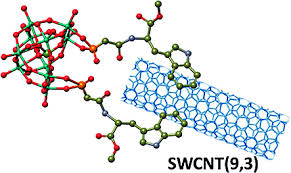Schottky bonding of MWNT and SWNT carbon nanotubes (PhD in nano-microelectronics)
Researcher and author: Dr. ( Afshin Rashid)
Note: Nanotubes are divided into two categories: single-walled (SWNT) and multi-walled (MWNT). chiral), which have metallic properties, and Zigzag, which has semiconductor properties.
Single-walled carbon nanotubes consist only of carbon and a simple sheet structure of regular hexagons. Some single walls can be conductive or semiconductor. This high electrical conductivity depends on the exact geometry of the carbon atoms. From the beginning of work on single-walled, they have been referred to as a one-dimensional phenomenon. And their electrical conductivity is like metals. The production of single-walled nanotubes has a high cost and it is difficult to produce and stabilize their properties during the processing of nanotubes. Since the use of nanotubes in polymer reinforcement currently improves the thermal and electrical properties, the use of multi-walled carbon nanotubes has greatly increased to improve the mechanical properties. On the other hand, the existing techniques for the production of single-walled nanotubes are not efficient enough and do not bring the necessary purity. Purification of these materials is very tedious and may eventually damage the nanotube structure.
The smooth wall surface of the nanotubes makes the rate of gas passage through them far greater than that of conventional micro-cavity membranes used in gas separation. Therefore, gases such as hydrogen and carbon dioxide can be separated by conduction in nanotubes. Applying pressure to a nanotube can change its electrical properties, which can increase or decrease its conductivity depending on the tension of a nanotube. This is due to the change in the quantum structure of the electrons. Therefore, it is possible to build transformers or transmitters based on nanotubes that are very sensitive to the application of very small forces. Also, the ability of nanotubes to sense very small pressure changes and convert this pressure back into an electrical signal can give pressure in the construction of nanotube switches sensitive to very small pressure changes.
Conclusion:
MWNT and SWNT nanotubes have the highest electrical conductivity at room temperature compared to any other known material. By placing a nanotube under the magnetic layer or by adding electrons or holes to the nanotube, a magnetic property can be created in the nanotube . This property makes it possible to predict the construction of devices in which magnetic and electrical connections are separated. have became. Magnetic connections can be used to magnetically polarize nanotubes - manipulation of spins - and non-magnetic connections can be used for voltage-current electrodes. Their magnetic potential can also be measured .
Researcher and author: Dr. ( Afshin Rashid)
PhD in Nano-Microelectronics




